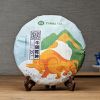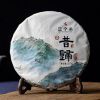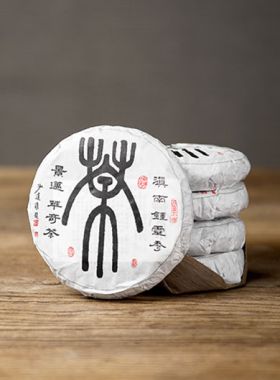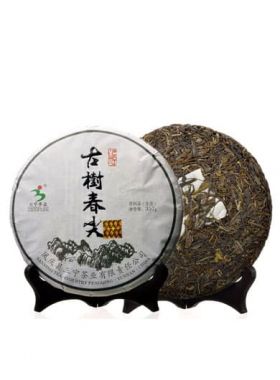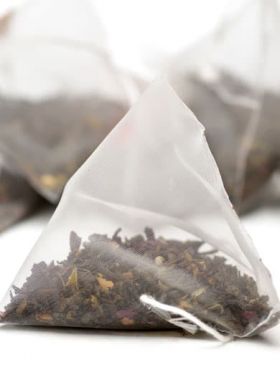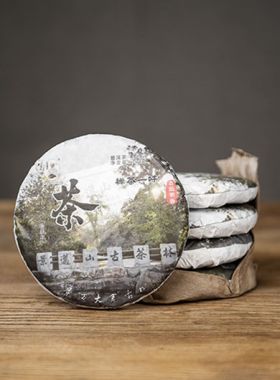-
Fast ShippingFree shipping for orders above $40
to most countries. -
Secure PaymentPay with Paypal, Credit Card …
-
Carefully SelectedFrequently Visit Tea Gardens.
Taste Repetitiously -
15 Days RefundNo Questions Asked
Refund Policy
TeaVivre 10th Anniversary Raw Pu-erh Cake
| Origin: |
Yunnan |
|---|---|
| Season: |
Spring Tea |
| Plucking Standard: |
One bud with one or two leaves |
| Harvest Time: |
April 25, 2020 |
|
Produce Date: |
Aug. 8, 2021 |
|
Net weight: |
200g |
| Dry Leaf: |
Round and well-shaped mini cake tea, with clear strip of dry tea. Fat tea buds and leaves with obvious white hairs on both the surface and inside of the tea cake |
| Aroma: |
Fresh aroma of the dry leaf; bright alpine freshness with complex floral and honey aroma of the tea liquor |
| Liquor: |
Bright and clean yellow |
| Taste: |
Mellow and thickness mouth-feel; with slight bitter and astringency as it is new tea, deeply moisten throat with sweet molasses fragrant lasting in throat, quick sweet aftertaste, enduring infusions (still have fragrance for more than 10 infusions); you will feel like walking in mountains with delighted refreshing fragrance always around |
| Tea Bush: |
Yunnan large-leaf tea bush species (100-300 years old Gushu) |
| Tea Garden: |
Gong Zhang Ancient Tea Area (altitude of 1580 meters) |
| Caffeine: |
Low caffeine (less than 20% of a cup of coffee) |
| Storage: |
Store in cool, dry place away from sunlight; keep ventilated |
| Shelf Life: |
The aged the better |
Angel's Comment:
TeaVivre customized 200g puerh cake from wild grown material, which has strong Alpine notes and rich substance.
This raw Puerh Tea Cake is made entirely of the spring raw material from wild tea trees grown among the forest gives the tea with strong Alpine notes and rich substance. The tea has a distinctive character and is known for its long-lasting aroma. In this carefully selected wild puerh mao-chao material which is pressed into this Puerh cake, you will obviously feel its wild characteristic.
 |
Cup Method |
 |
Chinese Gongfu Method |
 |
Teacup: 12oz / 355ml |  |
Gaiwan: 3.8oz / 110ml |
 |
203℉ / 95℃ |  |
203℉ / 95℃ |
 |
5g Tea |  |
8g Tea |
 |
Brewing time: 3 - 5 mins |  |
12 steeps: rinse, 10s, 10s, 10s, 15s, 15s, 15s, 20s, 30s, 45s, 70s, 90s 120s |
| Rinse time is around 5 seconds |
The Guogan Region is one of the world's tea sources. It is rich in natural resources of hundreds year’s age of ancient tea trees of Yunnan large-leaf species and is high-quality raw materials for high-end Pu'er tea. In addition to the advantage of tea tree resources, another absolute core advantage that cannot be surpassed is the pure original ecologic environment here.
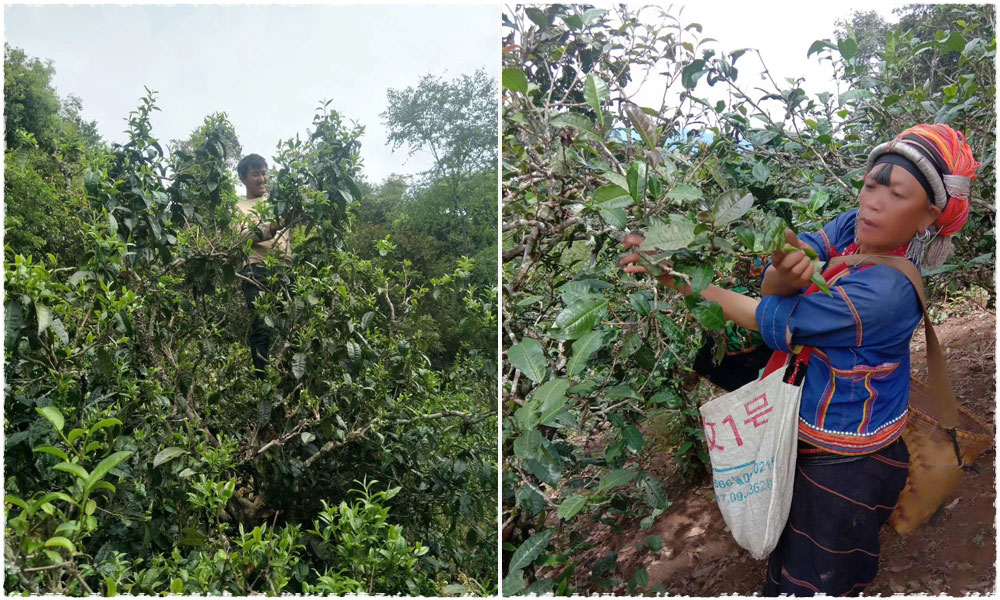
The Gong Zhang tea area is the region with the most production of Guogan tea. Because the traffic occlusion in the area that tea tree is completely grown in the original forest, the tea tree is almost in the wild state of unattended and cultivated for more than 80 years. There is no use of any chemical fertilizers and pesticides, thus making it 100% of natural tea raw material origin. Many people have said that they can fell the true nature when drinking GuoGan tea.
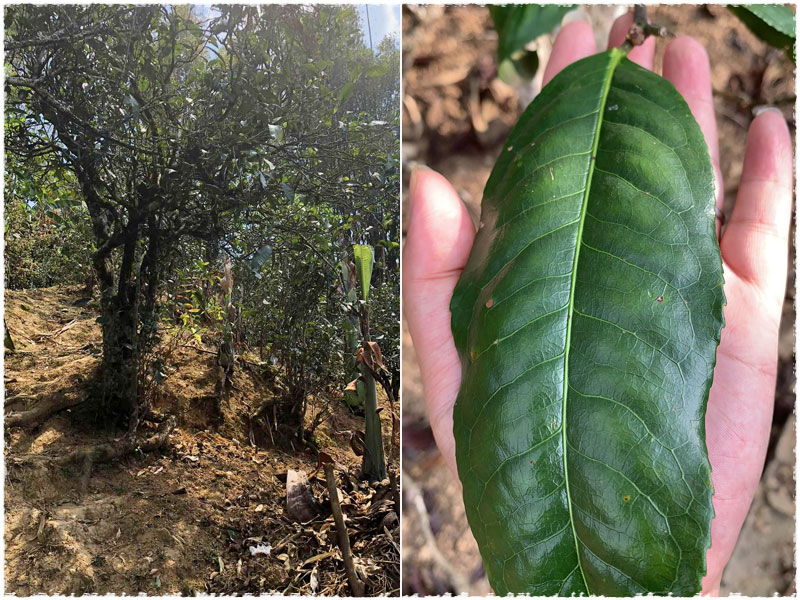
Growing in forest, the Tea buds and leaves of Guo Gan ancient tea are bigger and fatter that ancient tea in other tea area.
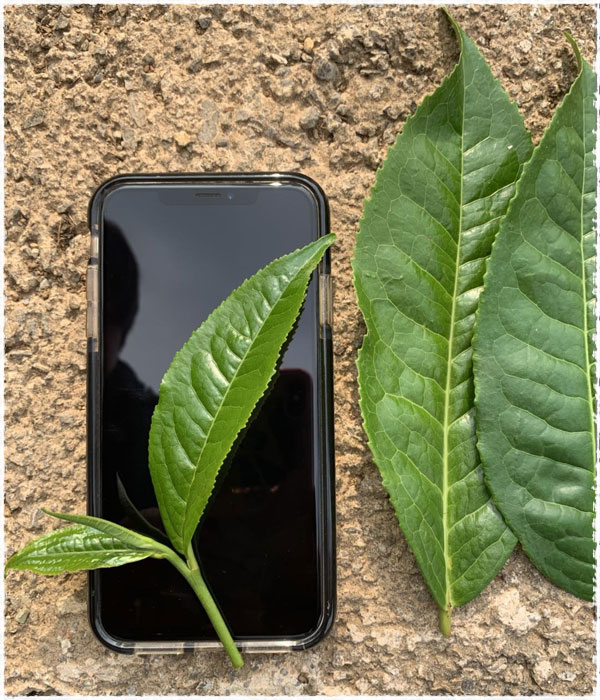
This puerh cake is made of the raw material one bud with one or two leaves as shown on the photo.
The Guo Gan is mostly mountainous and hilly and is mainly composed of three large “dams”, with the most famous one “Masuba”. The terrain of Guo Gan is between 450 – 2400 meters in elevation, with an average of 1216 meters. Guo Gan belongs to typical low-latitude and high-altitude plateau humid monsoon climate zone. It has plenty kinds of plant species and still retains its original ecological environment. In addition, the situation of surrounded by three sides of rivers made it accumulated a large amount of camellia plant in this area. Together with the wild arbor trees in the original growth ecological environment, it has become the most superior ecological material of Pu’er Tea.
There is a famous Bangma Daxue Mountain in Mengku, Lincang, Yunnan. The mountain peaks are covered with snow and clouds all the year round. Ancient tea trees of Yunnan large leaves spread throughout the original forests in the mountain. On the hillside of the northern section of the Bangma Mountain Range, there is an ancient Yi village called "Bing Dao", the proverb "Biandao", which means the place where the bamboo fence is used as the gate. At the other end of this Bangma Daxue Mountain, it has already crossed the border, which is the Guo Gan ancient tea tree area. Guo Gan and Bing Dao are respectively on two sides of the Bangma Daxue Mountain. They have almost the same high-quality soil and ecological environment, so the ancient teas of the two places are as the same fragrant.
The origin tea tree species in Guo Gan belongs to Subtropical large-leaf species, which is Yunnan large-leaf tea bush species. According to the local historical records, Guo Gan and Mengku, Yunnan belong to the same tea source region. The leaves from this type are abundant in polyphenols, catechins, amino acids, and caffeine.
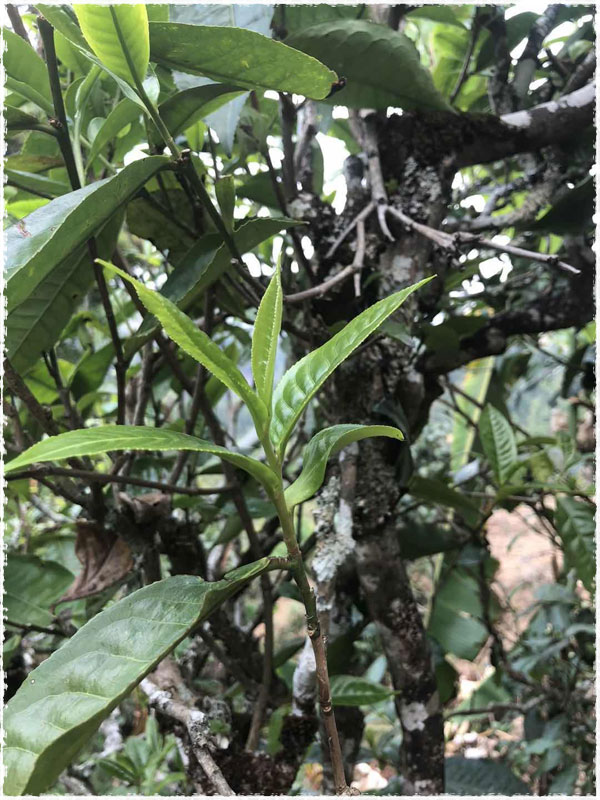
Pu-erh tea is one of the oldest types of Chinese tea, with a history stretching back over 1,700 years to the Eastern Han Dynasty, when the tea was called Jing Cha. It is named after the town of Pu’er in Yunnan province, which was the earliest trading center for this tea. In its early history pu-erh was used as a bartering currency throughout southwest China, and there the famed Cha Ma Gu Dao - or Tea Horse Road - was built especially to transport this tea through the Himalayas to other countries and areas in Tibet.



